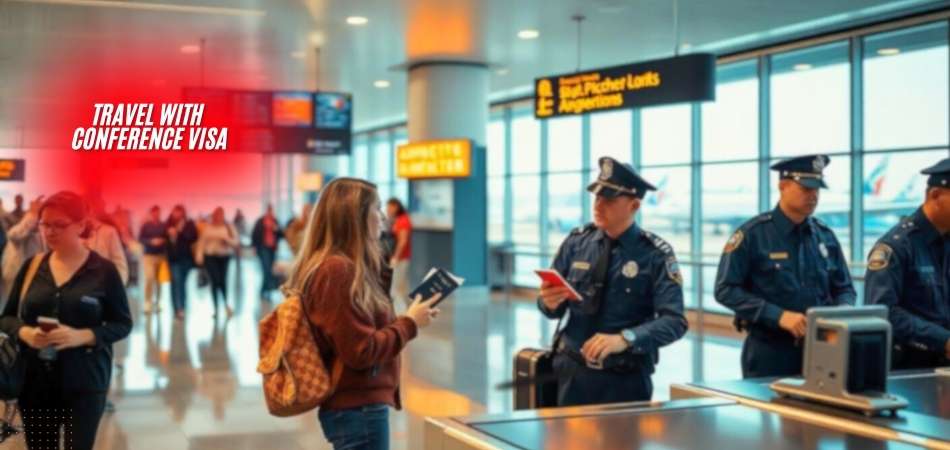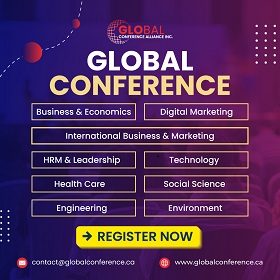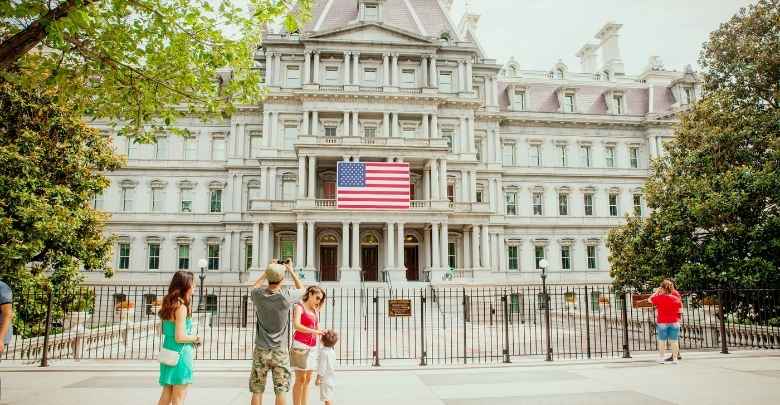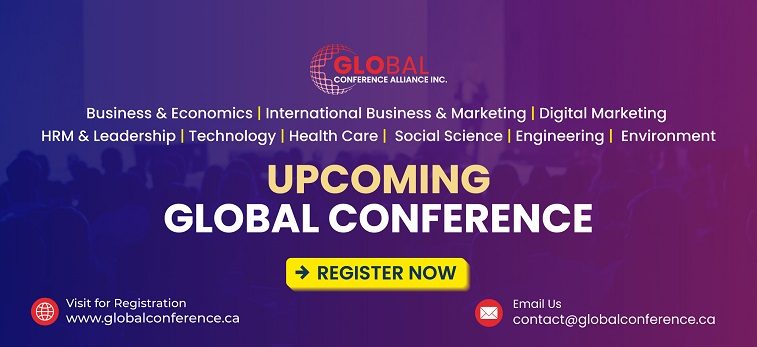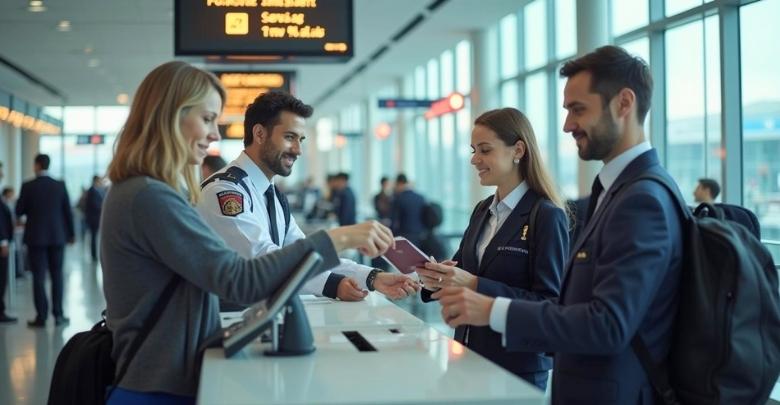A conference visa (B-1 visa) is a popular travel option for professionals and attendees planning to participate in events, seminars, or conferences in the USA. But what if the conference is over or you arrive after it has ended? You might wonder, “Is it possible to travel to the USA on a conference visa after the conference?”
The answer is yes. Even if you missed the conference or arrived afterwards, you can still use your conference visa (B-1 visa) to travel to the USA. However, it’s essential that your activities comply with the visa’s terms, and you should ensure you don’t overstay the authorized period.
If you are making travel plans for the post-conference period, here is what you need to know before you begin your journey.
Is It Possible to Travel to the USA on a Conference Visa After the Conference?
Yes, you can travel to the USA on a conference visa even after the conference ends. However, it’s important to follow the conditions of your B-1 visa. This means you must engage only in activities permitted under the visa and avoid overstaying your authorized period.
The B-1 visa is specifically for business-related activities, including attending a conference in USA or other professional events. Even if the event has concluded, you can still use your visa to conduct meetings, negotiate contracts, or engage in similar tasks. It is essential to ensure that your activities align with the visa’s purpose and are not outside its scope.
Missing the conference does not make your visa invalid as long as you meet its conditions. You should clearly explain your plans to immigration officials upon arrival in the USA. Be prepared to show documents proving the purpose of your visit and your adherence to the visa’s rules.
Always remember that a B-1 visa does not allow extended stays or tourist activities unrelated to business. Planning your trip within the approved timeline and complying with all visa regulations is crucial. This ensures a smooth experience and prevents any future travel issues.
Rules for Entry to the USA if the Conference is Missed
Attending a conference in the USA often requires a B-1 visa, but what happens if you miss the event? While you can still enter the USA, it’s vital to follow specific rules to ensure compliance. Here are the key points to keep in mind for a smooth entry process.
- Visa Purpose Must Be Maintained: Your B-1 visa allows business-related activities, even if the conference is missed. Ensure all planned activities align with its conditions.
- Proof of Original Intent: Carry documents showing your original intent to attend the conference. These include registration confirmations or email correspondence with organizers.
- Justify Delayed Entry: Be ready to explain why you missed the conference. Provide valid reasons like flight delays or unavoidable personal circumstances.
- Adhere to Business-Only Activities: Even after missing the event, only conduct approved business tasks. Avoid engaging in leisure activities unrelated to the visa’s purpose.
- Show Evidence of Business Engagements: Prepare a detailed itinerary of business meetings or tasks. Include contact details of individuals or companies you plan to visit.
- Avoid Overstaying the Authorized Period: Stick to the duration of stay allowed on your visa. Overstaying can lead to visa issues or future travel bans.
- Be Honest with Immigration Officials: Clearly communicate your reasons for entry and missed attendance. Honesty helps build trust and ensures smoother processing at the port of entry.
- Carry Supporting Travel Documents: Have your travel documents, such as return tickets and accommodation details. These demonstrate that you intend to leave on time.
Difference Between a USA Conference Visa and a Tourist Visa
Being aware of the differences between a USA conference visa and a tourist visa is crucial for proper planning. Each visa serves a specific purpose and has distinct rules. Knowing which visa suits your travel goals can help avoid unnecessary complications and ensure a smooth visit.
Purpose of Travel
The main difference lies in the purpose of your visit. A conference visa is for business-related activities like meetings or events. A tourist visa is for leisure, visiting family, or sightseeing. Ensure your activities match the visa type to avoid complications.
Activities Permitted
A B-1 visa allows attending conferences, negotiating contracts, or conducting meetings. A B-2 visa is strictly for personal or recreational purposes. You cannot mix tourist activities with business under a B-1 visa. Staying compliant ensures smoother travel experiences and avoids legal issues.
Application Process
Both visas require completing the DS-160 form and attending an interview. The conference visa may require additional documents, such as invitation letters. A tourist visa needs proof of ties to your home country, like family or assets. Providing complete and accurate documents increases your chances of approval.
Validity and Duration
The validity of a USA conference visa depends on the consulate’s decision and your planned activities. Tourist visas often have longer validity, up to 10 years. However, the authorized stay duration is decided upon entry, regardless of visa type. Always check your I-94 form for your permitted stay.
Documentation Requirements
Conference visas need proof of event registration, business purpose, and employer sponsorship. Tourist visas require evidence of funds, ties, and travel plans. Having organized and accurate documentation is critical for both applications. Submit truthful details to avoid unnecessary delays or rejections.
Restrictions and Conditions
B-1 visa holders cannot engage in personal or leisure activities unrelated to business. B-2 visa holders cannot conduct business during their stay. Violating these restrictions can lead to visa revocation and future travel issues. Staying informed helps avoid costly mistakes.
Tourist Activities That Allowed on a Conference Visa
A conference visa (B-1) allows you to visit the USA for business purposes, but certain limited tourist activities are also permitted. These activities must not interfere with your primary business purpose or violate the visa’s terms. Understanding what is allowed can help you make the most of your trip.
Exploring Local Attractions After Business Hours
You can visit museums, parks, or cultural landmarks during your free time. Ensure these activities do not disrupt your business commitments. Visiting iconic sites near your conference location is allowed and encouraged. Always balance leisure with the primary purpose of your visit.
Dining at Local Restaurants
Enjoying local cuisine at restaurants or cafes is acceptable under a B-1 visa. This activity is considered part of experiencing local culture. Dining with business associates or independently during breaks is permitted. Ensure your dining plans remain within reasonable limits of your trip.
Shopping for Personal Use
Purchasing souvenirs or personal items during your trip is allowed on a conference visa. This includes small gifts or memorabilia for family. Large-scale shopping or excessive purchases unrelated to your visit may raise questions. Keep your shopping minimal and within the scope of personal use.
Attending Cultural Events
You may attend cultural events like concerts, festivals, or exhibitions as part of your local exploration. These activities must not take priority over your business goals. Participating in such events can provide insights into local culture. Always ensure these activities are scheduled outside of your business hours.
Walking Tours or Sightseeing
Taking guided tours or exploring the city on foot is permitted. These activities are typically short and do not conflict with business purposes. Walking tours offer a great way to learn about the area. Stay mindful of your visa’s restrictions and time limits.
Relaxing at Hotels or Nearby Areas
Relaxing at your hotel, using amenities, or visiting nearby spots is perfectly acceptable. These activities do not interfere with your business goals. Using nearby recreational facilities like parks or gyms is also allowed. Keep all leisure activities appropriate and within the terms of your visa.
How to Align Your Travel Plans with Visa Restrictions?
Planning your travel in line with visa restrictions is vital to ensure a smooth journey and hassle-free entry. Understanding and following the visa rules can help avoid complications. Here’s how you can align your plans effectively while staying compliant with your visa requirements.
Know Your Visa Type and Purpose
Familiarize yourself with your visa type and its specific purpose to avoid misunderstandings. A B-1 visa is for business activities like meetings. Activities outside its scope, such as paid work, are not permitted. Understanding restrictions helps you focus on acceptable activities during your stay.
Create a Detailed Itinerary
Prepare a clear schedule outlining business activities and travel plans. Include conference details, meeting times, and any permissible leisure activities. Ensure your itinerary matches the purpose stated in your visa application. Having a plan demonstrates your commitment to compliance during your trip.
Carry Supporting Documents
Bring documents supporting your trip’s purpose, such as conference invitations, meeting agendas, or hotel bookings. Proper documentation reassures immigration officials of your intentions. Proof of return travel confirms your commitment to leaving on time. Keeping organized paperwork simplifies your entry process.
Avoid Prohibited Activities
Do not engage in work, study, or long-term stays outside your visa’s scope. Staying within approved limits is key to avoiding USA Conference Visa rejections, as prohibited activities can lead to serious issues. Following the stated purpose ensures compliance and helps you avoid penalties or future travel complications.
Maintain Communication with Authorities
Answer immigration officers’ questions honestly and clearly upon arrival. Transparency about your trip purpose builds trust and avoids misunderstandings. Be polite and provide concise information when asked for clarification. Good communication creates a smoother entry experience.
Stick to Approved Duration
Abide by the time frame authorized on your I-94 form. Overstaying can lead to visa issues and future travel bans. Plan your departure well in advance to avoid last-minute complications. Compliance with your visa’s timeline is crucial for future trips.
Steps You Can Take to Legally Enter in the USA After Missing the Conference
Missing a conference doesn’t mean you can’t enter the USA, but it requires careful planning to follow visa rules. Ensuring your travel aligns with legal requirements is essential to avoid complications. Here’s a step-by-step guide to help you legally enter the USA even after missing the conference.
Step 1: Confirm Your Visa’s Validity
Before traveling, check if your conference visa is still valid and hasn’t expired. Ensure that the visa conditions allow your entry despite missing the event. If in doubt, consult with the issuing embassy or consulate for clarification.
Step 2: Prepare Supporting Documents
Gather documents that demonstrate your original intent to attend the conference, such as registration confirmations or email correspondence. Be ready to provide additional evidence for your current visit, like business meetings or other valid activities. Proper documentation strengthens your case at the port of entry.
Step 3: Explain Your Situation Honestly
When speaking to immigration officers, be honest about why you missed the conference. Provide valid reasons, such as unavoidable personal circumstances or travel delays. Clear and truthful communication ensures a smoother entry process.
Step 4: Highlight Your Business Purpose
Focus on the business-related activities you plan to undertake during your visit. Mention meetings, negotiations, or other professional tasks aligning with your visa type. This reassures officials that your trip complies with the visa’s conditions.
Step 5: Show Proof of Return Plans
Present a confirmed return ticket to demonstrate your intention to leave within the authorized period. Providing accommodation details also helps show your travel is well-planned. These steps help establish that you won’t overstay your visa.
Step 6: Seek Legal Advice if Needed
If unsure about your eligibility to enter after missing the conference, consult an immigration lawyer. They can guide you through the process and clarify legal requirements. Professional advice ensures compliance and reduces the risk of complications.
FAQs
Managing the rules for traveling to the USA on a conference visa (B-1) can raise many questions. Whether it’s about eligibility, activities allowed, or specific situations, having clear answers can make planning easier. Below are some FAQs to help clarify key aspects of this topic:
Is It Necessary to Reapply for a Visa If I Miss the Conference?
No, reapplying is unnecessary as long as your B-1 visa remains valid. You can still use your visa for business-related purposes that comply with its conditions. However, ensure your activities align with your original travel intent and carry relevant documentation to avoid misunderstandings.
Will Immigration Officers Question Why I Missed the Conference?
Immigration officers may inquire why you missed the event to confirm your compliance with visa rules. Provide an honest explanation with valid reasons, such as travel delays or unforeseen personal emergencies. Supporting documents, like flight change confirmations, can help establish your credibility.
Is Attending Informal Networking Events Allowed on a Conference Visa?
Yes, you can attend informal networking events related to your business while on a B-1 visa. These events should align with your professional goals and not involve paid work. Keep all networking activities secondary to your primary purpose of visiting.
Can I Bring Family Members with Me on a Conference Visa?
No, the B-1 visa is specifically for business purposes and does not cover family members. They must apply for a B-2 tourist visa if they wish to join you. Ensure their travel does not interfere with your business commitments.
Do I Need to Notify the Embassy If I Miss the Conference?
Notifying the embassy is not mandatory, but it can help clarify your intentions if you missed the event. Keeping the embassy informed may assist in addressing questions during future visa applications. Transparency reflects positively on your travel record.
Bottom Line
If you follow the visa’s terms, you can travel to the USA after the conference on a conference visa (B-1). Activities must align with its business-related purpose, such as attending meetings or negotiating contracts. To address the question, “Is it possible to travel to the USA on a conference visa after the conference?” The answer lies in complying with the requirements.
Ensure proper documentation, honest communication with immigration officials, and adherence to authorized durations. Missing the event does not invalidate your visa if your plans remain within its scope. By staying transparent and prepared, you can enjoy a smooth travel experience. Following these guidelines helps prevent complications and ensures your visit to the USA is both productive and trouble-free.

